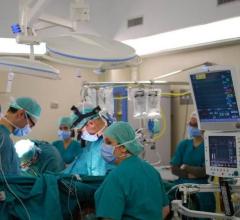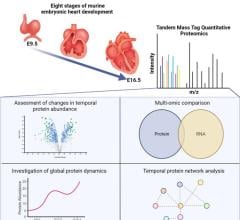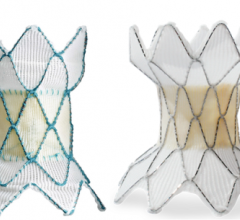
May 2, 2016 — In a recent case series, clinicians from The Heart Center at Nationwide Children’s Hospital and The Ohio State University Wexner Medical Center describe the first implantable hemodynamic monitor (IHM) placement in single-ventricle Fontan anatomy. To date, Nationwide Children’s is the first pediatric hospital to perform the procedure, while Ohio State’s Wexner Medical Center is the first hospital to perform the procedure in a Fontan patient. The case series is published in the journal Catheterization and Cardiovascular Interventions.
While the Fontan procedure has improved the short- and mid-term outcomes for patients born with single-ventricle anatomy, long-term complications of Fontan circulation include heart failure. These complications are thought to be secondary to elevated central venous pressure, chronic venous congestion and low cardiac output.
“This pressure gradient between central venous pressure and a combination of ventricular end diastolic pressure and resistance of flow across the pulmonary vascular bed is critical to cardiac output,” explained Darren Berman, M.D., co-director of cardiac catheterization and interventional therapy in The Heart Center at Nationwide Children’s. “Recently, implantable hemodynamic monitors have been used to monitor pressures in patients with left heart disease.”
Noninvasive studies are unable to determine these pressures in the Fontan anatomy, thus limiting physicians’ understanding of the changes in pressure for a Fontan patient in heart failure, according to Curt Daniels, M.D., director of adolescent and adult congenital heart disease in The Heart Center at Nationwide Children’s and professor of clinical cardiology at The Ohio State University College of Medicine.
“Our ultimate goal is to improve care for patients with congenital heart disease,” said Daniels. “We are excited to be leading the charge to incorporate the use of this tool to learn more about the hemodynamic changes in real-life ambulatory situations in Fontan patients.”
Two patients with single-ventricle anatomy and Fontan physiology, both with New York Heart Association (NYHA) functional class III heart failure, were implanted with the CardioMEMS HF System by Berman and Daniels. Real-time pulmonary artery catheter tracings were shown to correlate with IHM tracings in Fontan anatomy. Additionally, home transmission of IHM readings was successful.
“We have shown early safety and feasibility of placement of the IHM in these two cases, and we will follow these patients to monitor the safety in the medium- and long-term, including assessment for pulmonary arterial thrombus,” said Berman, who is also an assistant professor at OSUCM.
Berman, Daniels and coauthor Elisa Bradley, M.D., cardiologist at Nationwide Children's and assistant professor at OSUCM, hope that, as it does in patients with non-congenital heart disease, monitoring hemodynamic information from the transmissions will translate to improved fluid balance and heart failure symptoms, including reduced hospital admissions.
For more information: www.onlinelibrary.wiley.com


 March 31, 2025
March 31, 2025 








